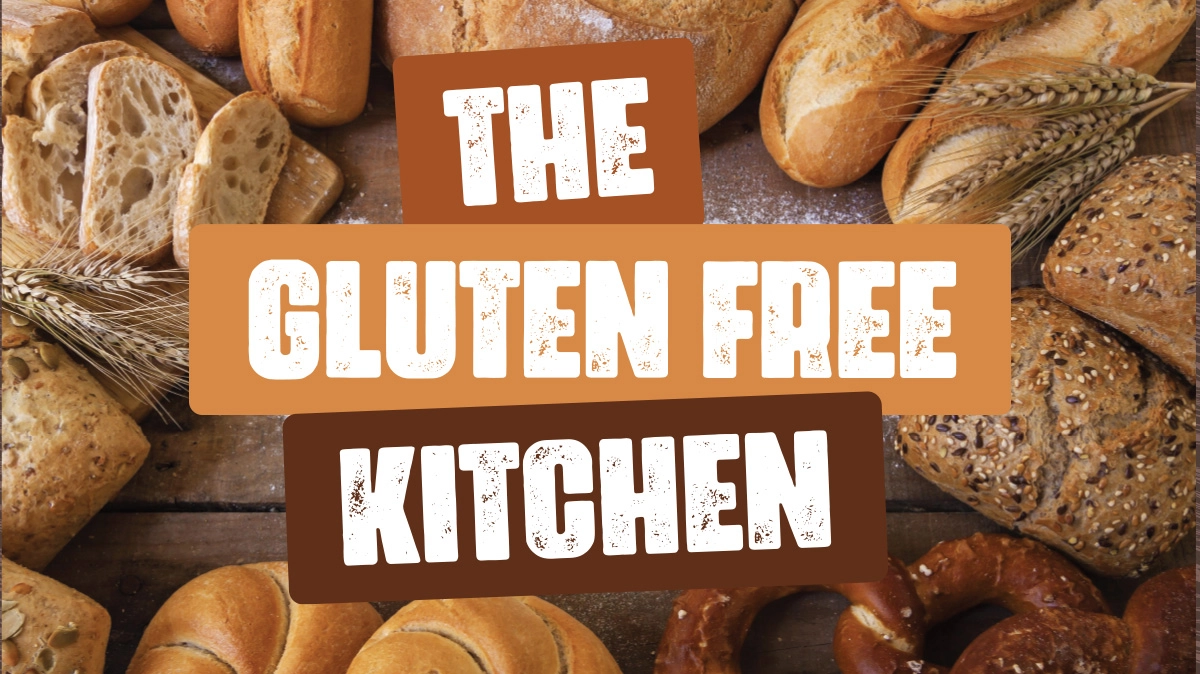
Coeliac disease is a serious autoimmune condition affecting 1 in 100 people in the UK (coeliac.org.uk). When people with the disease eat gluten (a protein found in wheat, rye, spelt, barley, unripe spelt grain, oats (unless certified gluten-free), small spelt, amelcorn, kamut and triticale), their body attacks its own tissues, destroying the delicate linings of their guts and causing painful digestive symptoms as well as malnutrition and serious complications.
If left untreated, it can cause gut damage and serious health complications like osteoporosis. The only treatment for this condition is a strict gluten-free diet for life. Even tiny amounts of gluten may cause people with coeliac disease to have symptoms in the short term and gut damage long term.
But do you know that even the gluten lurking in your kitchen can keep you sick even if you are eating gluten-free?
On this Coeliac's awareness week (9-15th May), we would like to share a few tips about how to make your kitchen gluten-free. Whether you have been diagnosed with coeliac disease, an intolerance to gluten, or if you live with someone suffering from this condition, these tips will help you to avoid accidentally getting gluten in your own home or help your family members to protect their health.
Regardless of which choice you make, here are five steps you can take to make your kitchen gluten-free.
Keeping your ingredients separate from other ingredients during storage and in preparation will help you avoid cross-contamination. If you are planning to make your entire kitchen gluten-free, bundle up all of your gluten-containing products, including cereals, crackers, cookies, cakes, breads, and anything else that includes wheat, barley or rye and remove them from your kitchen. If you are planning to have a shared kitchen, you should choose a cabinet (ideally, one that is far from your own preferred work area) in which to store gluten-containing products. Keep those products segregated at all times so there's no chance of mixing them up or using them by mistake.
Flours and baking mixes need to be stored in separate cabinets. Ensure that you handle packages of flour carefully to make sure you do not allow any of the flour to escape into the air. If you breathe it in and then swallow a tiny bit, you will be surprised at how sick you can get. Airborne gluten can make you ill, and flour also can settle on clean surfaces, which may come in contact with you.
Do not make the mistake of thinking you can designate one side of an existing toaster for gluten-free bread and for that side to remain uncontaminated. Unfortunately, this will not work and is not a suitable option. You will need a new toaster, as it is impossible to clean a used toaster well enough to make it safe for someone who requires gluten-free bread. Heavy-duty, reusable bags are common these days and are good when you are travelling and do not have access to a dedicated gluten-free toaster; but buying a new toaster and making sure your family members know never to use it for gluten-free bread, remains your best long-term option.
Many kitchen utensils such as plastic bowls, non-stick pots and pans can scratch easily; these scratches can harbour tiny amounts of gluten, no matter how careful you scrub. Colanders are also one of those kitchen gadgets that are impossible to clean properly due to their tiny holes. So, buying new colanders would be a good idea. You may want to get separate breadboards to keep gluten-free and gluten-containing breads separate. If your kitchen has limited space, it can be safe to use stainless steel pans and or glass bowls for both gluten and gluten-free foods as long as you wash them carefully and thoroughly.
Many people do not clean the oven regularly, but to finish the job of making your kitchen gluten-free, cleaning your oven properly is a "must do" and you have to make it a priority. If you use the oven to roast meat or cook anything that splatters, the oven walls and racks may have gluten-containing residue on them or if you use your oven to bake or toast bread, it is very likely it has plenty of gluten-containing crumbs on the bottom. Purchasing a self-cleaning oven is a fantastic option, as they clean to a temperature that should destroy the gluten protein. These ovens possess a feature known as "pyrolytic cleaning", which is an automatic cleaning function that works by heating the insides of your oven up to 500 degrees Celsius. This temperature ensures that grease will burn off the sides, and any spills and scraps of dried-on food will be reduced to a pile of ash which can then be swept away. If you do not have a self-clean oven, ensure that you scrub everything thoroughly, especially the racks. Also, make sure that you clean the drawer under the oven, as this frequently has crumbs.